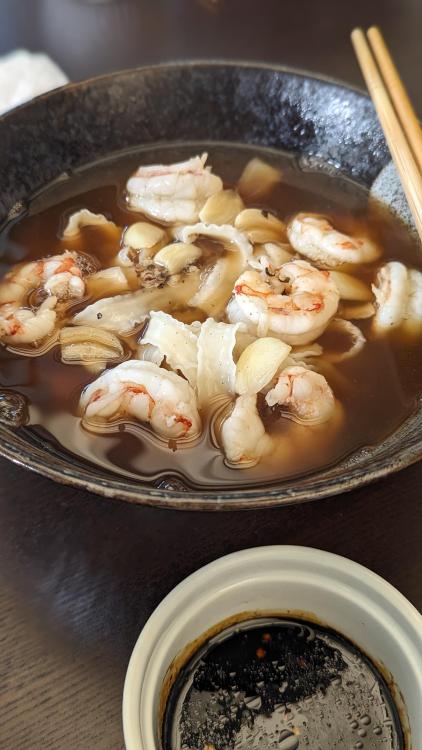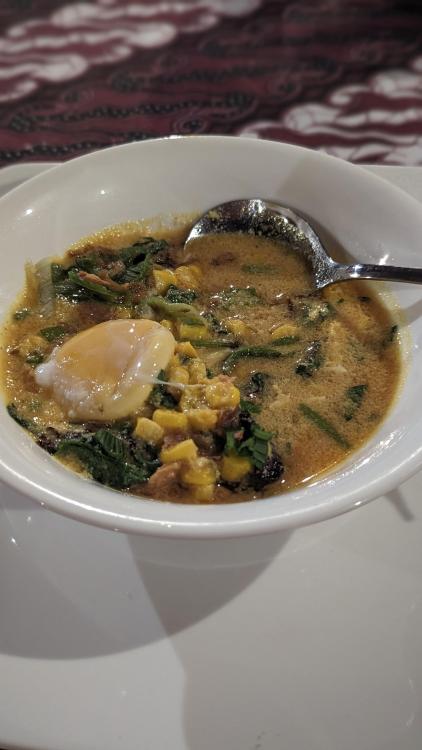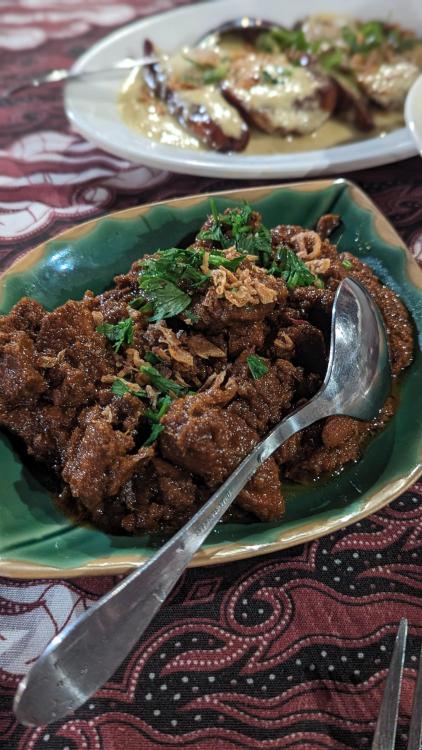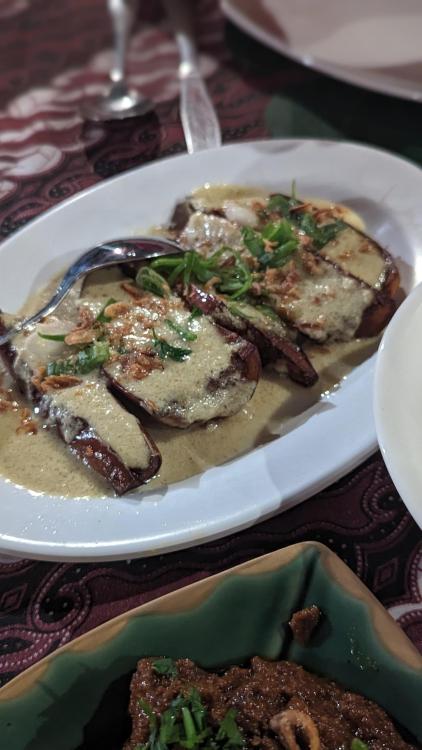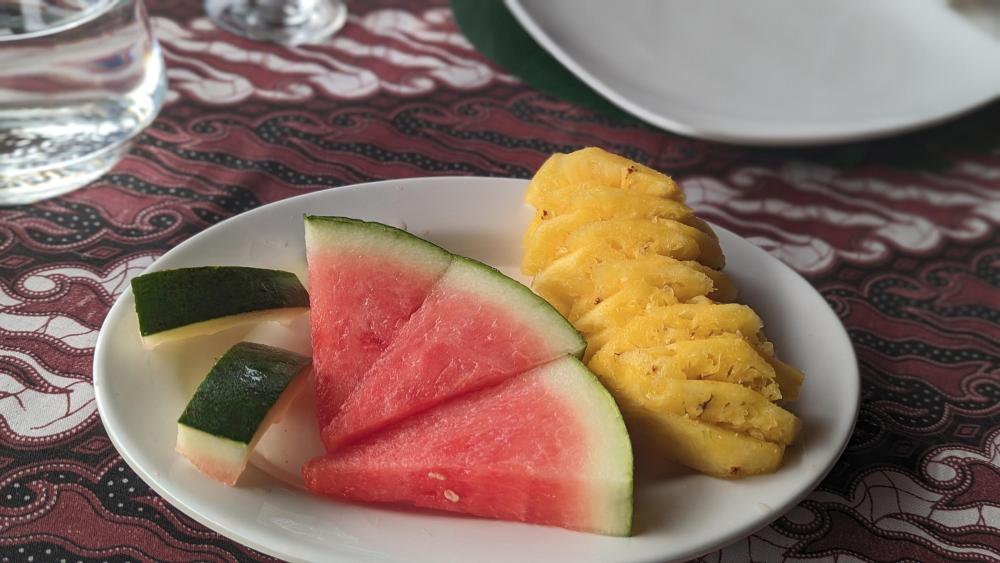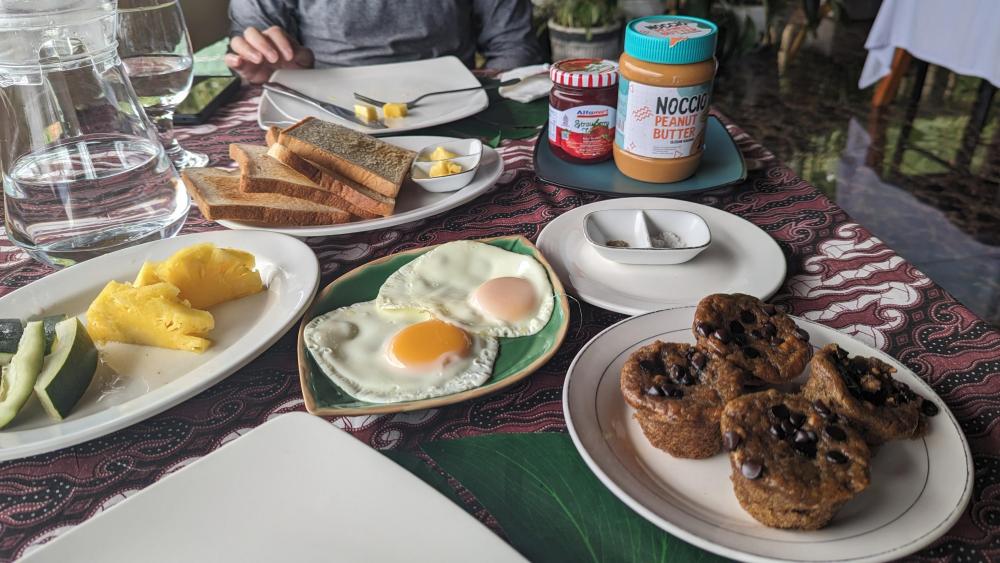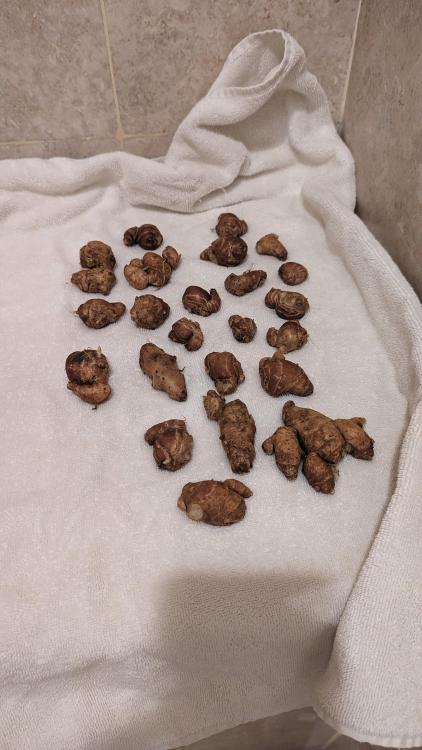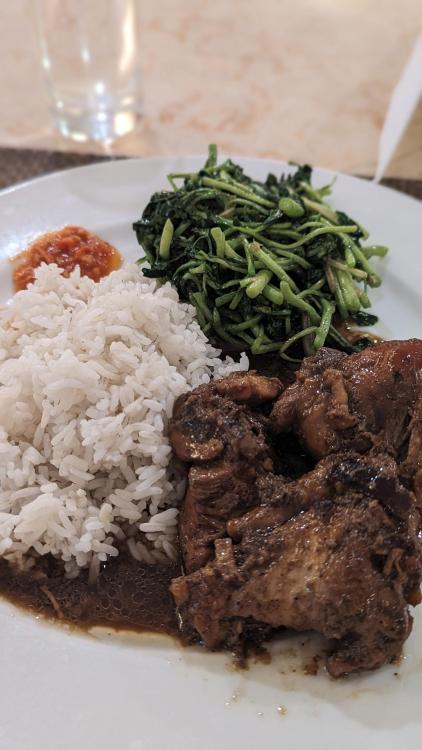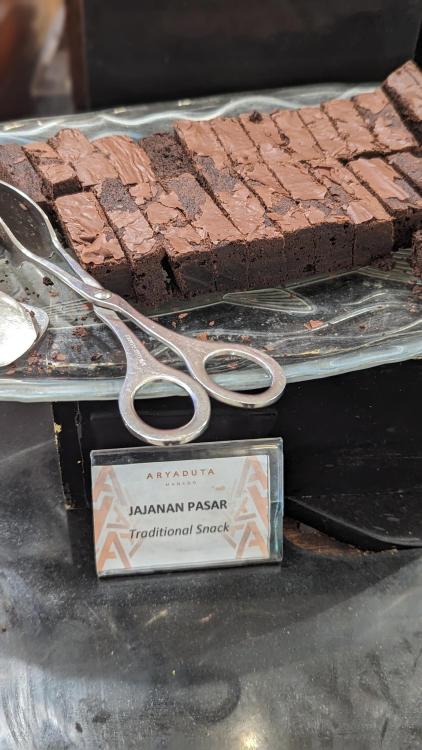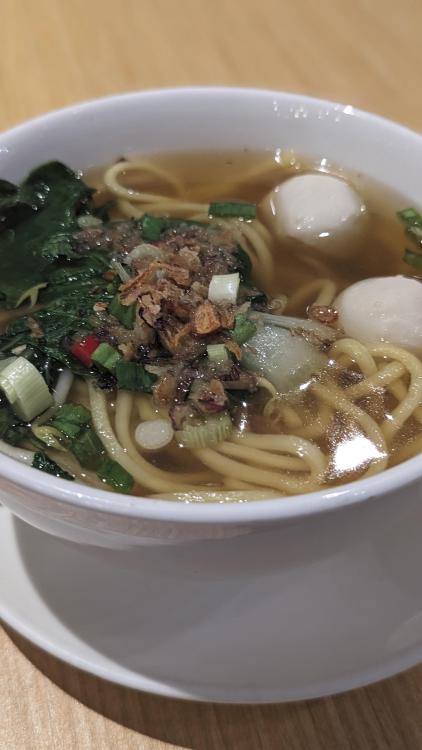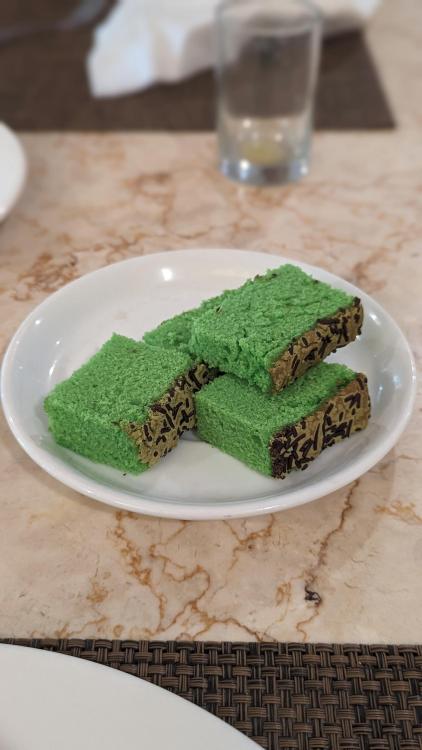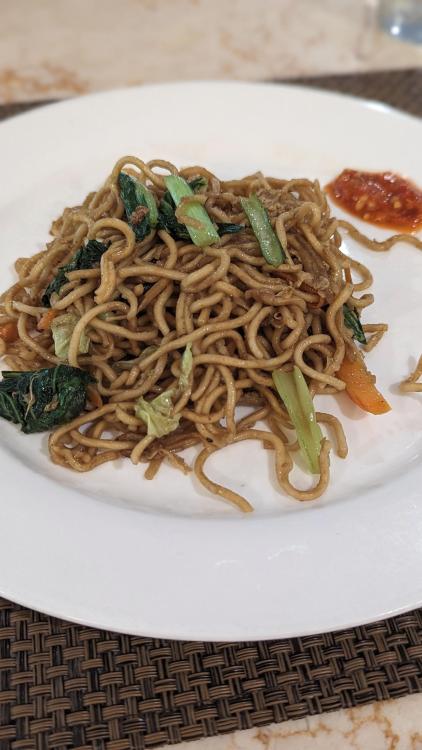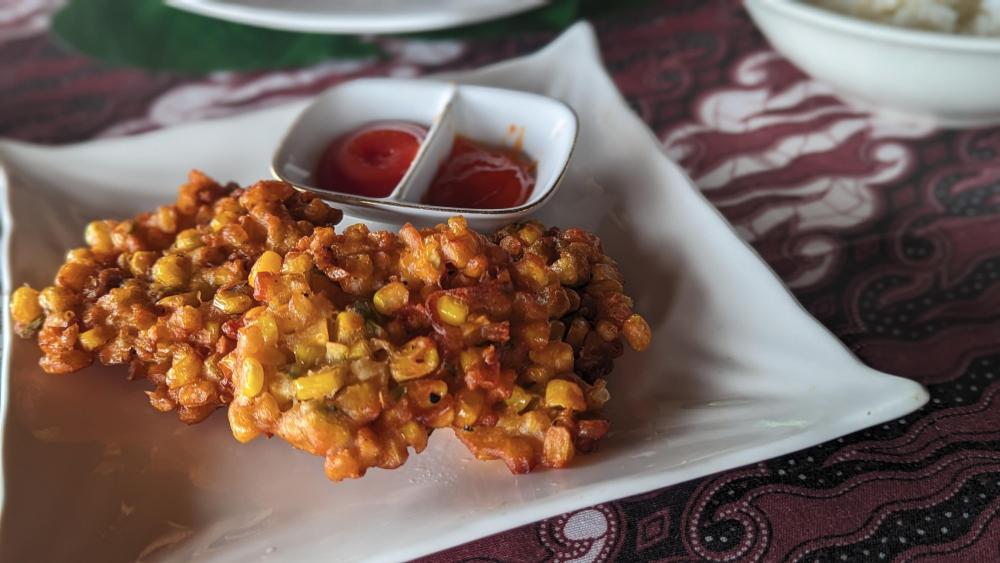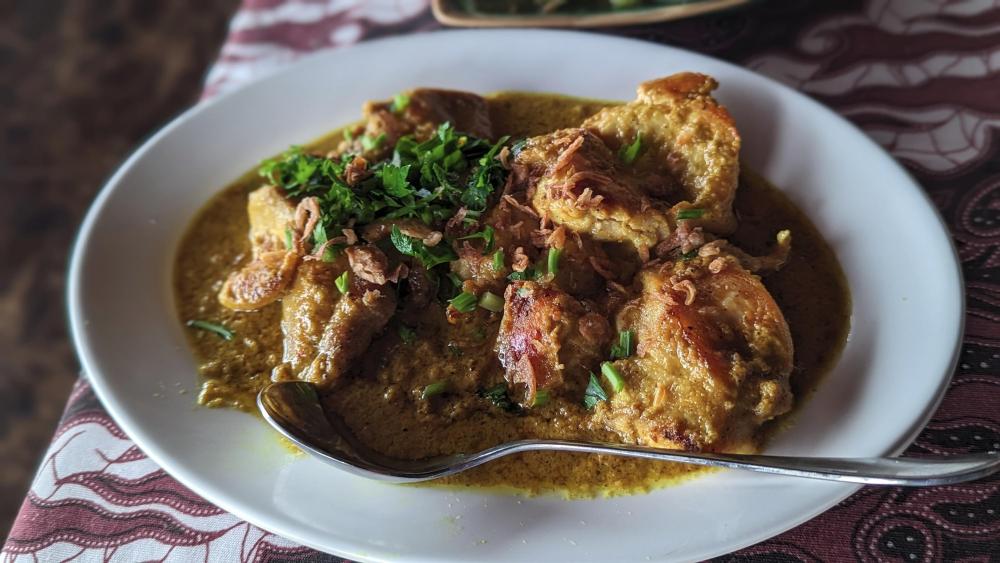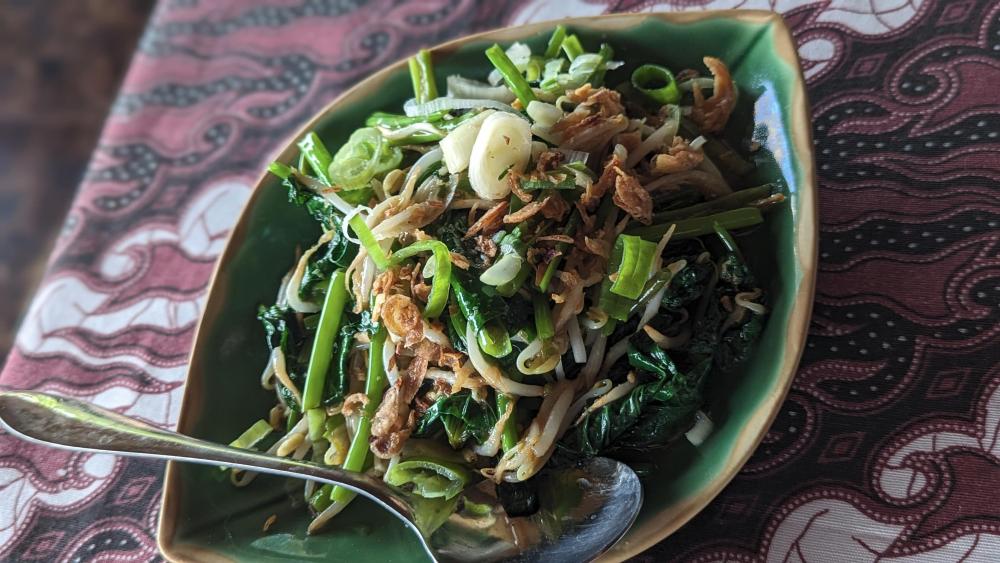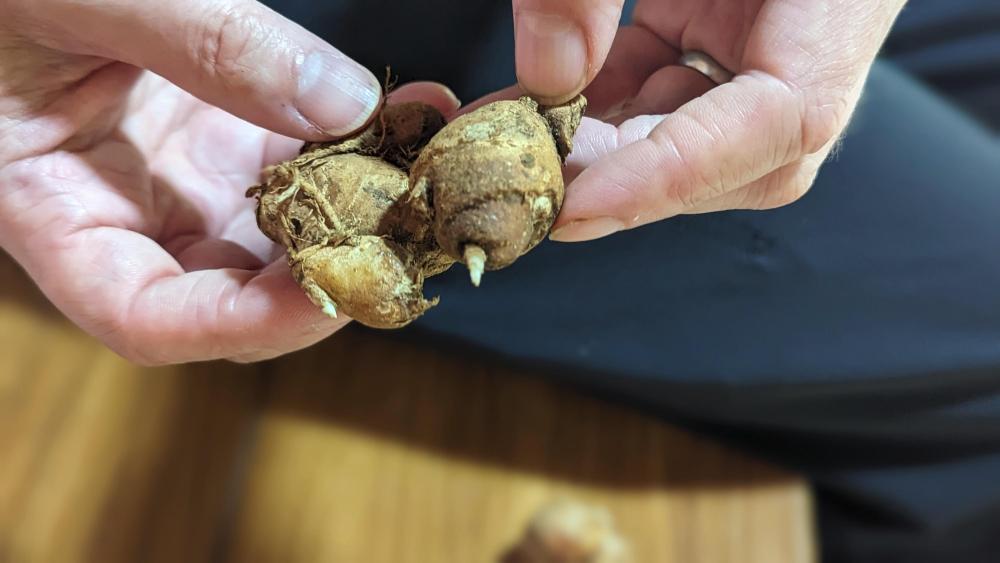
KennethT
participating member-
Posts
6,907 -
Joined
-
Last visited
Content Type
Profiles
Forums
Store
Help Articles
Everything posted by KennethT
-
For me, it was vegetables. One evening, my mother decided she would make the (dreaded) spaghetti squash. I was wearing jeans, and since I found the spaghetti squash vile, I decided I'd be clever and bit by bit, put it in my pocket. I then excused myself to go to the bathroom and emptied my pocket into the toilet. Unfortunately, my pants were soaked in the pocket area in the process so I thought no one would notice when i changed pants on the way back to the table. I also wasn't very thorough in getting every bit of string out of the pocket or off the toilet rim....
-
I wish you and Moe were my parents! I can't say how many times I sat at the dinner table as a kid, for hours, because my parents wouldn't let me leave until I finished everything. I could have sat there all night!
-
A week in North Sulawesi, Indonesia
KennethT replied to a topic in Elsewhere in Asia/Pacific: Dining
Yes, that medication is no fun. -
A week in North Sulawesi, Indonesia
KennethT replied to a topic in Elsewhere in Asia/Pacific: Dining
If you take a medication called methotrexate, the next day, 1 shot of anything will provide the Mother of All Hangovers. Don't ask how I know.... -
I don't know about this garlic, specifically, but mine lasts a LOT longer than normal when I keep it in the wine fridge. It's got the temp and humidity just like an old school root cellar.
-
Is it common to mix other grains with rice? I don't know if I've seen that before, other than in parts of Indonesia where they will have a few different types of rice, layered in a cone - but they're not intermixed with each other.
-
What are the bits of yellow in the rice?
-
A week in North Sulawesi, Indonesia
KennethT replied to a topic in Elsewhere in Asia/Pacific: Dining
When I was young, they would always give me flat ginger ale when I was sick. Probably why I'm not a fan of ginger ale now! -
A week in North Sulawesi, Indonesia
KennethT replied to a topic in Elsewhere in Asia/Pacific: Dining
Just for completeness, the reasons I added quite a decent amount of sugar were two-fold: 1) When I'm not feeling well, I find that slightly sweet is soothing, but 2) sugar can help ease nausea, according to the Cleveland Clinic. You need to scroll down quite a bit, but the essence is: -
A week in North Sulawesi, Indonesia
KennethT replied to a topic in Elsewhere in Asia/Pacific: Dining
It seems like they made a large flat slice and steeped in boiling water in a teapot. The slice seemed to be about 3 inches long, 1 inch wide and maybe 1/8 inch thick or so. Let it steep like 5 minutes. It should make a couple cups. I made sure to add maybe 1.5 teaspoons of sugar to each cup. -
A week in North Sulawesi, Indonesia
KennethT replied to a topic in Elsewhere in Asia/Pacific: Dining
Thanks. Yeah, unfortunately we're 2 for 2 of our most recent trips for getting sick! However, I will add that I am pretty sure that when we were sick in Penang over Christmas, we actually brought it with us from home so I don't know if that counts... But there is no remainder of the trip - we've been home now for about a week. Like all of our trips, it's way too short! I'm back to normal, or maybe 95% and my wife is getting back too. Last night was the first time we considered eating anything with any kind of flavor! Hopefully I'll be able to get back to cooking soon, but jet lag is still kicking my butt a bit, so between work and trying to go to bed early, we're just ordering in this week. -
That pipian dip looks similar to the dip used for calsots in Barcelona during the season. Also, does the infrared grill give you that kind of smoky grilled flavor at all? I remember reading in Modernist Cuisine that the grilled flavor came from burning aerosolized fat that would drop off of foods as they approached the hot coals. I don't know if those infrared lamps get nearly hot enough to do that though.
-
those noodles are in the refrigerated section
-
This is what I get - I get them at my local HMart... https://www.sayweee.com/en/product/Havista-Shanxi-Planed-Fresh-Noodles/11183?sales_org_id=16®ion_id=000007&campaign_id=MOFU_e-GLOBAL_t-Shopping_l-EN_r-Broad_src-GADS_o-dweb&utm_source=gads&utm_medium=cpc&utm_campaign=MOFU_e-GLOBAL_t-Shopping_l-EN_r-Broad_src-GADS_o-dweb&cam_id=20034217573&utm_adgroup=149235472500&keyword=&ftu=popupall&ftuflags=48&gclid=Cj0KCQjwqs6lBhCxARIsAG8YcDgujUbpZ56ZL7ap5PQZqaVohAn8DYj9XsZq732dIaKe_-FoziERMesaAtrhEALw_wcB
-
First time back in the kitchen in a long while... My wife is finally getting ready for some real food again, so I thought a good intro is Singapore style Bak Kut Teh with lots of slow cooked garlic and Sumatran black pepper, and Argentinian red shrimp (with knife peeled noodles).
- 807 replies
-
- 11
-

-

-
What are the rice paddy fish like? It's hard to tell from the photo - how big are they? Seems about 3-4" long. I assume you eat the heads as well?
-
I picked the wrong place to vacation this year!!!
-
A week in North Sulawesi, Indonesia
KennethT replied to a topic in Elsewhere in Asia/Pacific: Dining
Yeah, I understand and have great respect for what the people at CBP do. I didn't see any CBP dogs on this trip, but I have definitely seen them in the past. Many years ago, coming home from Thailand, they were there, and their handlers were mainly taking them towards a lot of the older Thai ladies - Aunties and Grandmas who just happen to be bringing home 2 suitcases full of chillies and who knows what else! The dog got excited near me because I had a bag of cashews in my carry-on that I actually had brought from home as an emergency snack either for the plane or hotel room (I'd hate to see their carbon footprint!!!) but the agent took one look at them and moved on. Even if I had brought them from Thailand, nuts that have been roasted are allowable. From what I gather, right now there are several viruses worldwide that could be hiding in chilli and tomato plants - which is why they're temporarily not allowing any plant parts in without certs or hard-core inspection at a USDA location (not just a window at the airport). -
A week in North Sulawesi, Indonesia
KennethT replied to a topic in Elsewhere in Asia/Pacific: Dining
whoops... sorry - I completely neglected to follow through about this... mostly because it was a non-event. I had done a LOT of research prior to the trip as to what I could and what I could not bring back. In addition to the kencur (a type of ginger, which is allowed in hand luggage without permit), I had wanted to bring back some fresh chillis since the ones in Indonesia are different from most everywhere else I've seen. However, all parts of the chilli (fruit, seeds, plants) are currently prohibited to bring back under any circumstances. I may have been able to get a permit to ship a plant back (not carry in luggage) but it would require a phytosanitary certificate which is hard to come by and can be expensive. Same for seeds. Or, I could ship non-certified plants or plant parts to my local USDA where they would be inspected for pests/diseases and then finally shipped to me at home but that required a LOT of paperwork, I'd have to find a place to ship them to the US while in Indonesia, and there's a strong possibility it could be rejected after all that. Theoretically, I'd have to declare my kencur that I brought back in my hand luggage when going through immigration and then I'd have to visit the USDA window for them to inspect it for dirt/pests. My wife and I both have Global Entry (which saves a LOT of time at US immigration) and, theoretically, the kiosk you use when entering should ask you a bunch of questions about declaring stuff. I don't know if the kiosks weren't working right or whatever - it recognized me as soon as I stepped up to the machine (it uses facial recognition) but didn't ask any questions whatsoever, and there are no longer any paper declaration forms that there used to be years ago (I asked). There also was no USDA window, office or anything else I could find. After the kiosk, there was a CBP (customs and border protection) agent who just asked my name and when he saw it on the list, just waved me through no questions asked. To be honest, there was a relatively long line and it seemed like he just wanted to get everyone through ASAP. After that, there were no other customs agents around to even ask questions of and the hallway just dumped me into baggage claim and I didn't see any customs agents after leaving that area either. About a year ago, I was a little addicted to watching a show that showed the CBP at work detecting and catching people bringing in illegal drugs, money, plants, you name it. They are really good at it, but it seemed like they targeted flights coming from specific countries or if they had received a tip that there was a person of interest on a certain flight. In my case, arriving from Singapore where basically everything is illegal and punishable by death, they didn't consider that a high priority for inspection. Wow! That was a really long answer to part of your question.... sorry for my rambling. I definitely have a habit of going into WAY too much detail. In any case, I got my kencur home with no problems. Even if I had visited a USDA office, I was confident that it would pass inspection since I thoroughly washed each piece individually to make sure all traces of soil and pests were gone (there were no pests and almost no soil to begin with). I then put all of the pieces on a white towel which I shook around which should have made any remaining bugs visible. I had come prepared with ziplock freezer bags and paper towels to line them, and put my washed and dried pieces in the bag. When I got home, I put most of the pieces in the freezer - like galangal, kencur freezes fine - the only thing that changes is the texture but it gets ground up into a spice paste anyway so that doesn't matter. A couple of the pieces were rooting already, so I stuck them in some coco coir with a very weak hydroponic solution and have it under lights in my apartment. I'm hoping I'll get some new roots/shoots, then I'll have a never ending (although supposedly very slow growing) supply! -
These were some amazing beef rollups at a Yunnanese restaurant in Beijing.... the second photo down:
-
A week in North Sulawesi, Indonesia
KennethT replied to a topic in Elsewhere in Asia/Pacific: Dining
Oh, I recognize what ginger can do.... but @liuzhou and I have similar feelings on TCM, so that comment was more of a joke than anything else. -
A week in North Sulawesi, Indonesia
KennethT replied to a topic in Elsewhere in Asia/Pacific: Dining
No, no doubt. I wasn't sure what it was when I had it but I was also a bit distracted as I was concerned for my wife so not really paying attention. I didn't bother translating the sign in front of the chafing dish until recently, so at the time I didn't know if it was a type of water spinach or something else. It had the word "air" in the name, which means water, so I figured it either grew in water or had water in the name. -
A week in North Sulawesi, Indonesia
KennethT replied to a topic in Elsewhere in Asia/Pacific: Dining
Dinner that night... Some type of corn soup I think this was beef rendang - a bit on the sweet side for me, but otherwise, really well done. Nicely caramelized which is a hallmark of a good rendang. I thin this was eggplant in some kind of curry. It was tasty regardless of what it was! The next morning we were out the door early to meet our guide for the 6:30AM tour of the reserve. Our guide specialized in finding the black macaques while another guide we met up with specialized in finding birds, however both knew how to find just about everything that lived there. It turned out that the guides are also paid by a researcher from a university in NY (he never told me which university) to track the animals every day, keep tabs on them and take notes. The researcher would come every few months to study the animals further. We saw a lot of these macaques. Unlike the ones in Bali, these ones are not aggressive at all and barely acknowledged us which I was happy about. We spent quite a bit of time following a few different families around as they went about their morning. We also stumbled upon where a pair of owls roost. In addition to specializing in finding and observing the macaques, our guide also specialized in taking cell phone photos through a pair of binoculars! Kingfisher This is a bear cuscus - a marsupial who was at the top of this ridiculously tall tree. You could barely see him without the binoculars. We got back to the hotel probably around 10:30 and then they made us breakfast after we cleaned ourselves up. Watermelon and awesome pineapple I think the muffins on the right were banana muffins with chocolate chips. We left to return to Manado after breakfast. It's around this time that my wife's intestinal distress was intensifying (it actually started in the middle of our tour that morning but she was so excited, she didn't want to leave) and she started feeling exhausted. So when we got back to Manado, she just crashed in bed and I cleaned all of my kencur. All washed and ready to bring home! Since neither of us were feeling that great, we skipped lunch. My wife basically stayed in bed the rest of the day/night - she wound up developing the same fever that I had back on the island and was feeling really lousy. The next morning was time to get and up pack to go home. She was still feeling lousy but at least her fever seemed to have gone away and she was able to keep her intestinal distress under control. Breakfast: They called this ayam panggang kecap which is translated as soy sauce chicken. According to some recipes that I could find (all in Bahasa), the chicken is first stewed in a spice paste liquid, then once cooked, brushed with soy sauce and grilled. I don't think this chicken had ever seen a grill, but it was tasty nonetheless. The greens were called stir fried watercress and was really good. Still slightly crunchy even while sitting in the buffet chafing dish for a while. After breakfast, we finished packing and headed to the airport. After an uneventful flight back to Singapore, we had about a 7 hour layover where we had originally planned to go to the Jewel at the airport (but is not in the transit area so you have to go through immigration) and see their indoor forest which we had missed last time and then go to Violet Oon's restaurant there. Violet Oon is like the Lydia Bastianich of Peranakan food in Singapore and I was really curious to try her version of ayam buah keluak. But my wife was really feeling like crap so we just wound up going to a pay-per-use lounge where we could find some seats away from everyone else and she could just rest/sleep. They had quite a few food options but I only took a photo of 1 of the things I had: Noodle soup with fish ball - quite tasty. So, that't it! All in all, a decent trip somewhat hampered by illness but overall, still totally worthwhile. -
A week in North Sulawesi, Indonesia
KennethT replied to a topic in Elsewhere in Asia/Pacific: Dining
The next day was another transit day. We're off to the eastern side of the peninsula that has the Tangkoko Nature Reserve, home to a few endemic animals like tarsiers and black macaques. But first, breakfast at the hotel: Black pepper chicken and some kind of fried vegetable fritter Mee goreng more kue When we arrived at the new hotel (another very small hotel with only maybe 5 or 6 rooms) we were met by the woman I had been corresponding with months before. Again, there is literally nowhere around to get something to eat other than at the hotel, so all meals are included in the room rate. The hotel is located right at the edge of the Nature Reserve. The only other things in the area are a couple of homestays for other people who wanted to see the reserve. So, she wanted to know what types of food we liked so that they could have everything ready for us. As always, I said that we had wanted local food as much as possible. I also asked her if there were any markets in the area that had kencur, if it was used in the local cooking. She verified that it was used, and when we arrived she presented me with over a pound of it that she picked up on her own time!!!! How sweet is that?!? Once we got back to Manado, I made sure to wash it thoroughly so that I wouldn't have any problems importing it once we got home. One piece of kencur Anyway, we got there at lunch time, so we stuck our bags in our room and then went to lunch. Looking out over the Nature Reserve from the restaurant Corn fritter, with chilli sauce and ketchup Chicken curry At some point in our email exchange I had mentioned that kang kong (water spinach) was my favorite vegetable, so here it is! It is around this time that while I'm at maybe 85% now, my wife is starting to feel her own intestinal problems. But she was a real trooper and persevered! Our first tour in the nature preserve was that evening, to see the nocturnal tarsiers. After walking for maybe a half hour, our guide took us to this tree, which is one of the homes for the tarsiers: And then we saw them!!! They are so interesting looking - and they're a marsupial. They're the world's smallest primate. We also saw a blue tarantula: And a black tarantula: After thoroughly checking each other for bugs when we got back to the room, we went for dinner.....




